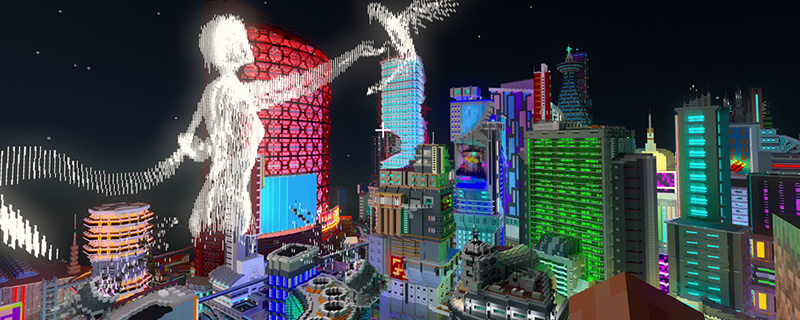Minecraft with RTX – Performance Review and Tech Analysis
Conclusion – Path-Tracing is the Future, Minecraft is the start Â
Minecraft’s RTX beta reveals two things, first, that the future of high-end graphics lies with raytracing, and second that graphics hardware has a long way to go before this option becomes viable within AAA titles.Â
Even with Minecraft’s blocky visuals, Minecraft’s path-traced renderer is an incredibly demanding workload on modern graphics hardware, even Nvidia’s RTX 2080 Ti. This factor makes Nvidia’s DLSS technology vital to achieving high framerates within Minecraft’s RTX beta, even with the game’s already lowered chunk sizes.Â
Graphically, Minecraft’s path-traced visuals look like nothing else within the industry, offering gamers a mix of vibrant colours, accurate lighting and graphics that are worthy of a next-generation version of Minecraft. This is a clear sign that path tracing is the future of PC graphics, but it also highlights the limitations of today’s hardware.Â
Once again, Nvidia’s latest iteration of DLSS has proven to be a powerful tool within Nvidia’s RTX handbook. When combined with path-tracing, it becomes a vital performance-boosting tool. On Nvidia’s RTX 2060, DLSS enables RTX 2080 Ti-ish levels of performance, and Nvidia’s RTX 2080 Ti can achieve performance boosts of up to 2.74 at 4K. Given how DLSS has a seemingly negligible impact on the quality of Minecraft’s visuals, the option is basically a must for all Nvidia RTX users.Â
The only real downside with Minecraft’s RTX beta is the fact that it currently lacks full multiplayer support, which is something which will be addressed when the game’s path-traced version exits beta. Outside of that, the game’s limitations within DXR aren’t hugely, negative, and can be easily lived with.Â
By default, this beta version of Minecraft offers a render distance of 80 chunks, but with DXR path tracing enabled, the game’s draw distance defaults to eight chunks and maximised to 24 chunks. This highlights the hardware limitations of Minecraft’s DXR implementation, as it is both memory-intensive and demanding on graphics hardware.
Perhaps it would be better for Microsoft to consider a hybrid raytracing approach for future versions of Minecraft, as that could enable a lot of what Minecraft RTX offers while lacking the path-traced version’s performance and chunk size downsides. Maybe future releases of Minecraft will optimise the game’s raytracing performance further, but as it stands, the game is too demanding to be accessible to most PC gamers.Â
As mentioned on page 3, some of the minor downsides of Minecraft with RTX is the game’s strange player reflections, which currently only show the player’s arm, and the game’s artefacts in certain circumstances. These are minor issues that could be addressed with future patches, though it highlights that Minecraft’s RTX implementation still needs work.Â
With Nvidia, Microsoft has clearly shown how ray tracing can improve the visuals offered by any 3D game. While Minecraft’s graphics can already be considered charming, the game’s path-traced iteration is able to move the game forward to become something that’s truly next-gen. It also highlights the importance of Nvidia’s ray tracing acceleration tech and their AI-based DLSS upscaling tools, which both work in tandem to deliver the Minecraft with RTX experience.Â
If you didn’t think that raytracing is a gamechanger, Microsoft’s Minecraft with RTX beta has proven your wrong. There’s a reason why both the PlayStation 5 and Xbox Series X have invested in raytracing acceleration and why both AMD and Intel plan to follow Nvidia by offering full support for Microsoft’s DXR API with their future graphics hardware. It will take a while before we see path tracing in more complex AAA titles, but Minecraft with RTX clearly shows us where the industry is moving.
Those who want to access Microsoft’s Minecraft RTX beta can follow our guide here.Â
You can join the discussion on Minecraft’s RTX beta on the OC3D Forums.Â



